
While I primarily review smartphones, with the occasional laptop, today I’m venturing into new territory. Unexpectedly, the Nikon Zf arrived at the AzMo Tech office and quickly found its way into my hands. I used to be deeply involved in photography, mainly using DSLRs like the Nikon D3200 and Canon EOS 200D.
The Zf, a premium mid-range mirrorless camera, offered me both a challenge and an opportunity. Although it appears to have time-traveled from the 80s, don’t be deceived by its vintage look.
After a memorable week with the Zf, I’ve discovered there’s much more to this camera than meets the eye. For the first time and to the best of my knowledge, I’m excited to present a detailed review of the Nikon Zf. So, let’s dive right in!
Nikon Zf Specs at a Glance
Before we dive into the unit review, here’s a brief overview of the Zf’s technical specifications:

Design and Build
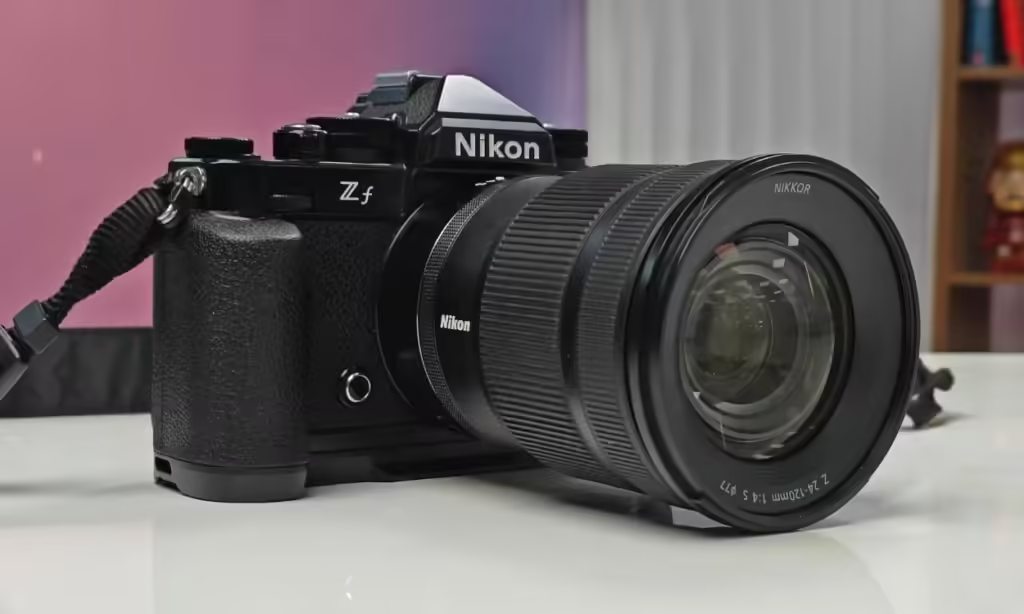
When it comes to design, the full-frame Nikon Zf might not appear modern, and that’s precisely its charm. Nikon has returned to its design roots with the Zf’s aesthetic, which I absolutely love. The Zf’s retro look sets it apart in a market filled with similar-looking mirrorless cameras. Its extraordinary yet understated appearance makes it worthy of display, like a trophy, inviting admiration from shutterbugs.
To begin with, the brass dials immediately capture your attention. Over time, the black coating on these dials will wear off, revealing the brass underneath and enhancing the camera’s vintage appeal. But the true highlight is the feel of the old-school, soft-release threaded shutter button. This threaded shutter button also allows for cable release, which is a fantastic feature.
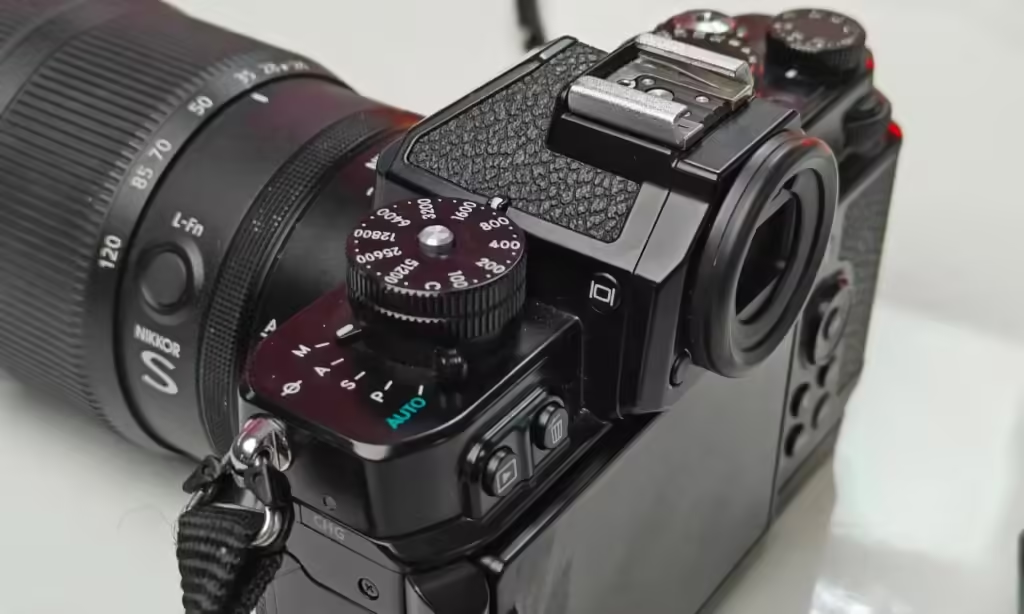
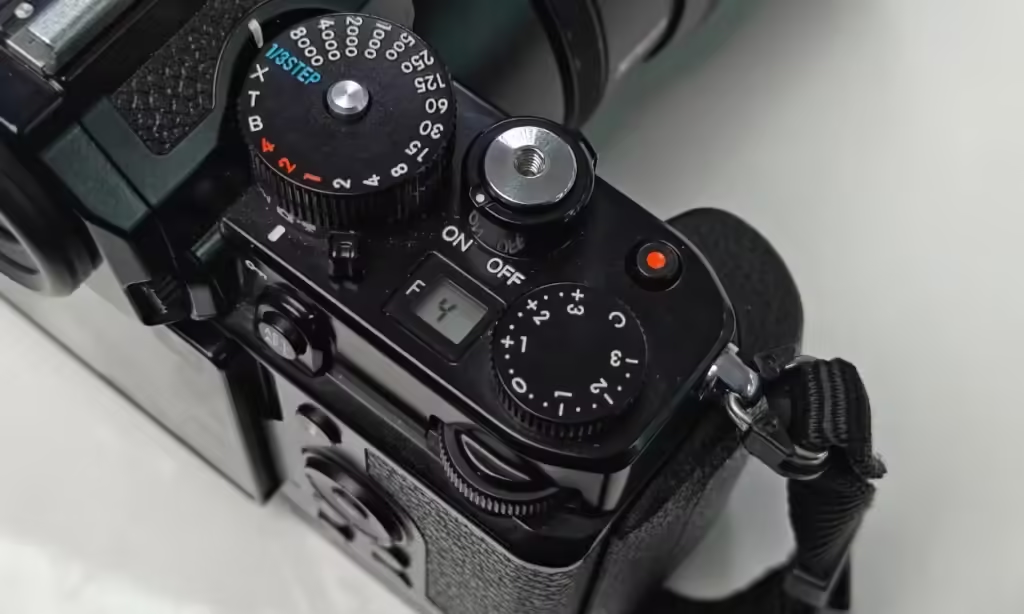
Think of this as the digital version of the classic, ultra-popular Nikon FM2, capturing the heft and in-hand feel of that groundbreaking vintage model. Compared to the more casual and beginner-friendly Nikon Z fc, the Zf feels like a more robust and advanced version. The camera has a rougher, tougher build and is also weather-sealed.
Additionally, when you open the battery compartment, you’ll find two SD card slots. One is a standard UHS-II compatible slot, while the other is a microSD card slot. I appreciate this setup, as it allows me to keep a microSD card inserted at all times as a backup.
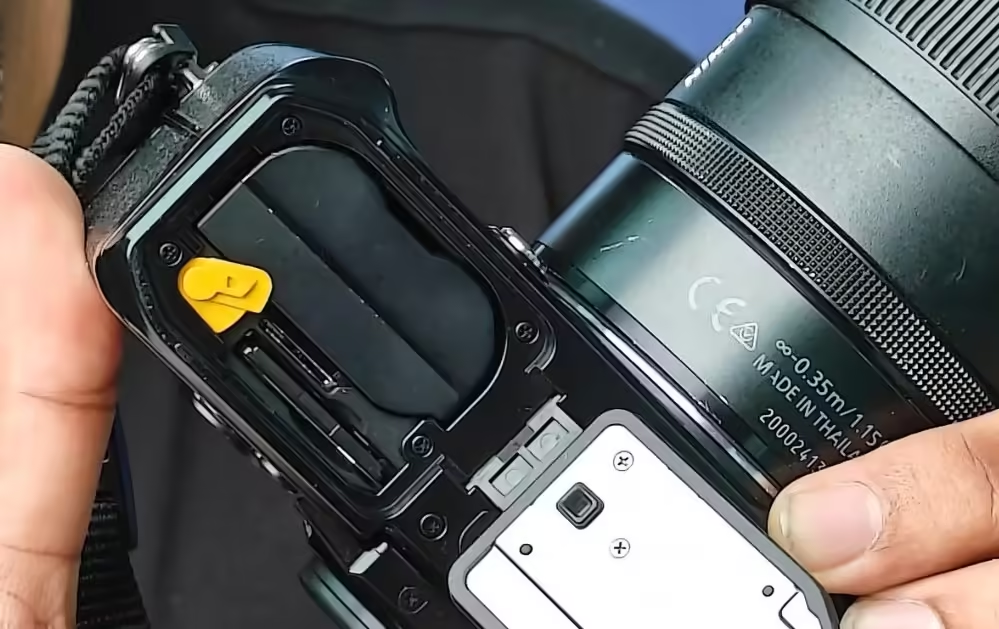
As for port selection, the Nikon Zf has plenty to offer. It features a 3.5mm headphone jack, a Micro Type D HDMI port, a USB 3.2 Gen 1.5Gbps port, and a microphone port.
However, the vintage design is a double-edged sword. While I appreciate Nikon’s commitment to the classic aesthetic, the lack of a solid handgrip, unlike the Z6, Z8, or Z9 models, affects handling. I’ll delve into this next.
Ease Of Use and Handling
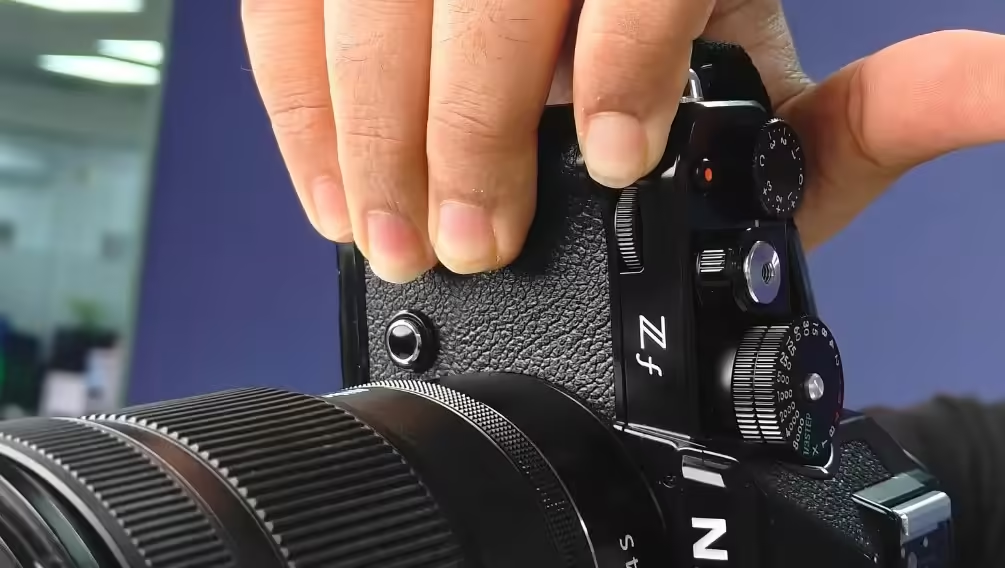
I received the Nikon Zf body along with the Nikkor 24-120/4 S lens, and the body struggles to handle the weight of the lens effectively. This is a heavy-duty mirrorless camera, weighing over 600 grams. So, understandably, if you’re not accustomed to using such cameras, you’ll start feeling the weight in your wrist after a while. I certainly did.
When using the camera, you’ll need to provide the lens with ample support to prevent your shutter hand from bearing too much weight due to gravity.
The limited handgrip on the body makes it challenging to shoot photos and videos with one hand. As you use it extensively, this becomes quite inconvenient, especially considering the absence of a thumb grip at the back.
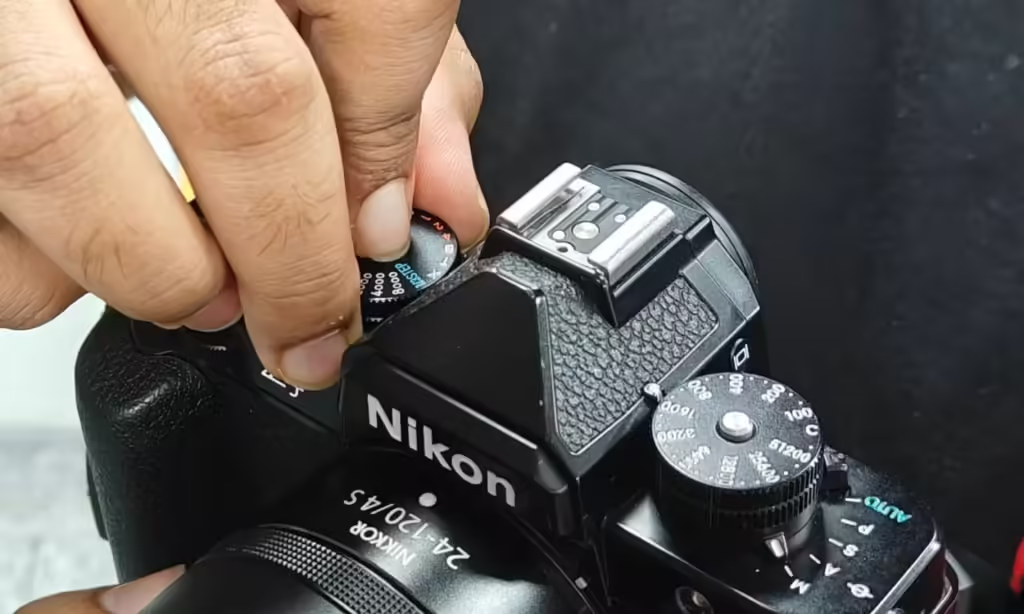
For the most part, I found myself using both hands involuntarily to operate the Zf. It’s worth noting that I have large hands. If you have smaller hands, handling the camera might be even more challenging.
Fortunately, Nikon included a SmallRig external grip with a quick-release Arca plate, which I kept attached at all times. I couldn’t risk accidentally dropping a $2000 camera. So, if you’re like me and not accustomed to handling such heavy cameras, I highly recommend getting a grip.
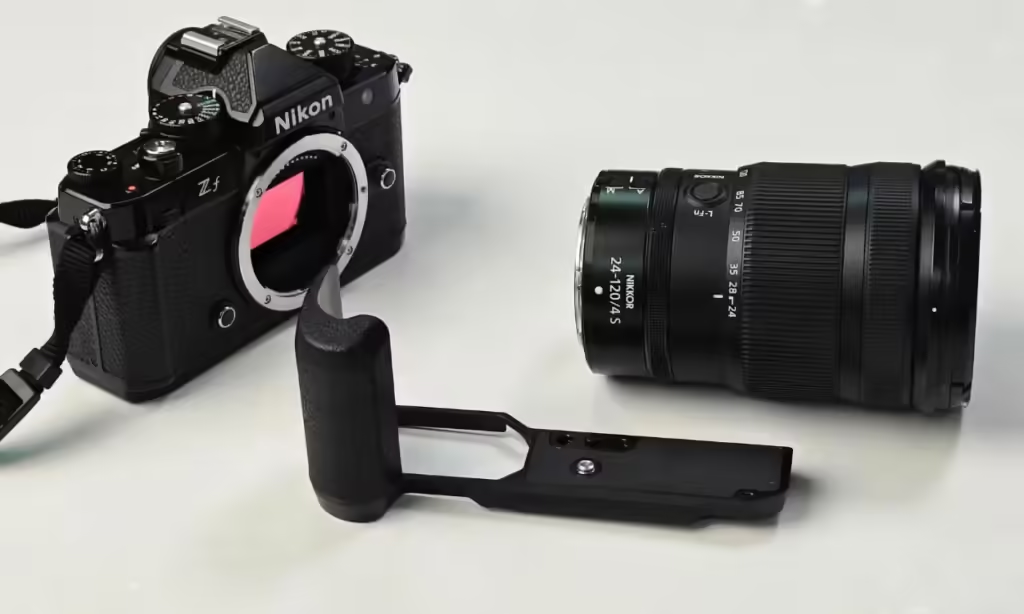
While I appreciate Nikon’s attempt to replicate the vintage experience of the Nikon FM2, it wasn’t the most user-friendly model to use. The ISO and shutter speed dials, in particular, always felt uncomfortably out of reach and a bit stiff. While there’s a certain satisfaction in using them, when you’re trying to capture a precious moment, you might find yourself wishing for better accessibility.
On the other hand, the software is quite clean, and I appreciate how well-organized the menu is. The UI doesn’t feel cluttered, with each section compartmentalized very effectively. After just a minute of tinkering with the settings, I was able to figure most things out. So, kudos to Nikon for that.
Viewfinder and Display
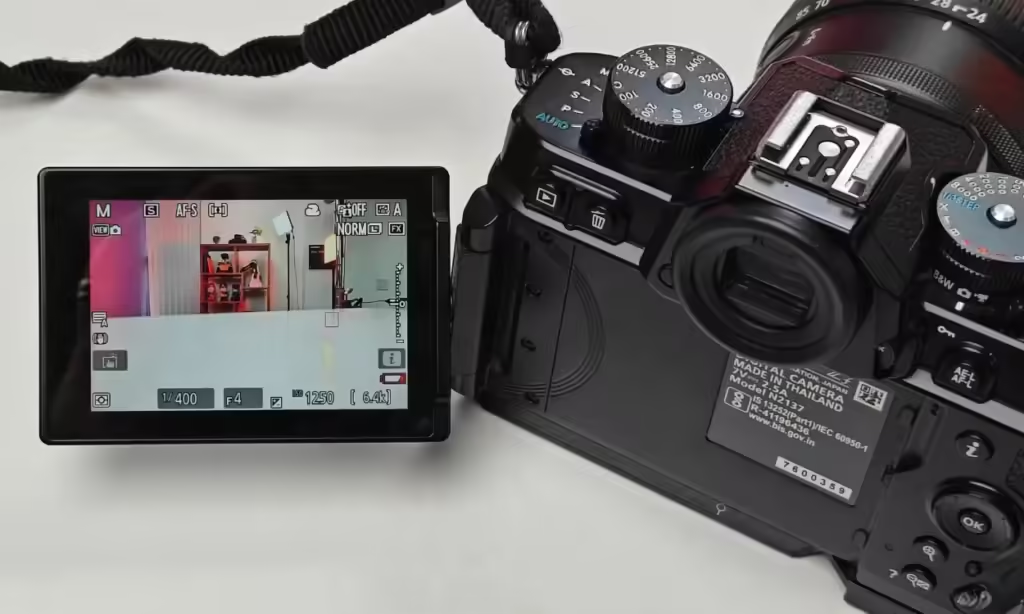
The Nikon Zf features a central optical 0.5-inch 3.69m-dot OLED electronic viewfinder with 0.8x magnification. The circular viewfinder module adds to the camera’s professional feel.
While an optical viewfinder is great for adjusting focus and taking better shots, I’ve always found using them with my glasses to be a bit of a headache. That’s why I’ve developed a soft spot for electronic viewfinders or displays, and the Zf’s 3.2-inch vari-angle TFT LCD touchscreen was a delight!
What sets this display apart is that while Nikon has offered vari-angle displays on its crop-sensor mirrorless cameras like the Z fc, Z30, Z50, and DSLRs like the older D5500, this is the first time a full-frame mirrorless camera from Nikon has featured one.
Whether capturing selfies or shooting from awkward angles, this versatile display provides my weak eyes with some relief.
Features
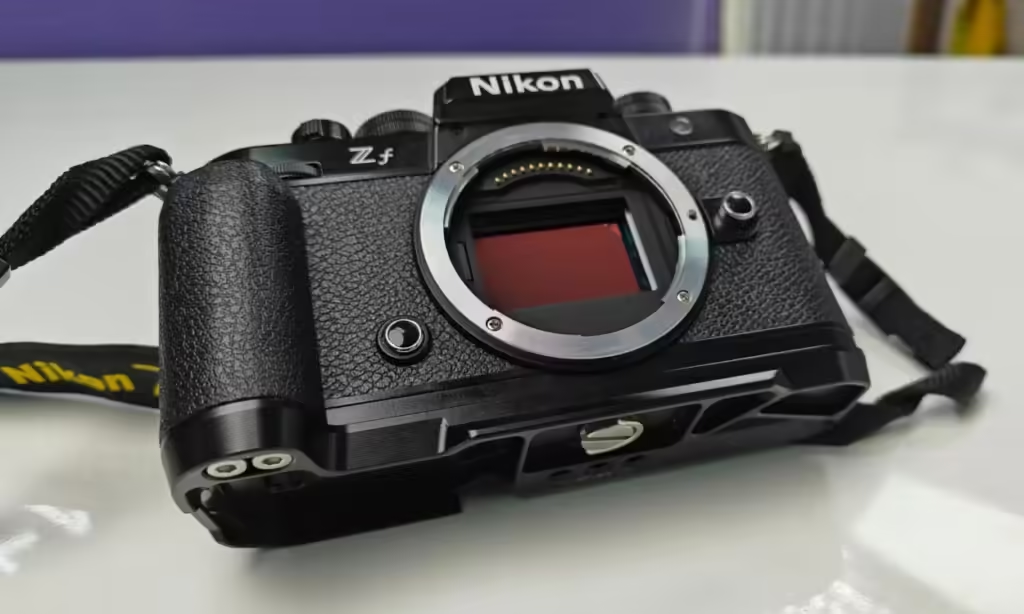
An outstanding feature of the Nikon Zf is its AI-powered automatic subject detection. This feature has been incredibly helpful for me, easing my reentry into photography and supporting me until I regain my confidence.
A small focus box identifies subjects in the frame for you to focus on. When a subject is in focus, the box changes color from red to green, indicating that you’re ready to capture the shot. While it’s not flawless and can sometimes wander like a puppy chasing a butterfly, you can easily reposition it on the touchscreen with your fingers and capture a shot instantly.
If the focus box is misbehaving too much, you can access the settings and switch it from auto to specific modes like People, Animals, Airplanes, and Vehicles. This feature truly elevates the Nikon Zf, making it a master of manual focus.
When it comes to autofocus, the Nikon Zf offers an impressive array of options. You have Multi-area focus, center focus, selective single-point tracking, continuous tracking, single tracking, contrast and phase detection, Live View, Face Detection, and even touch focus via the LCD display. Additionally, there’s focus peeking and focus zoom available, which are always handy features.
The Nikon Zf also boasts in-body image stabilization (IBIS), which is another standout feature. This allows the sensor to compensate for movement, meaning you can capture sharp images even at very low shutter speeds without needing a tripod as frequently.
Furthermore, the camera offers pixel shift shooting, enabling you to capture up to 96MP photographs through software-side processing. You can access this feature in your image settings menu, typically located at the bottom.
To utilize the pixel shift shooting feature, you’ll need to use the Nikon NX Studio software (Download) to combine multiple similar shots and achieve a higher resolution. This feature can use anywhere between two and ten images to combine for a higher resolution.
The results can be incredible, revealing a wealth of details in your photographs. Pixel shift shooting works best when capturing images in RAW format. Nikon NX Studio automatically detects a series of photos suitable for combination.
Camera Performance
As a full-frame sensor, the Nikon Zf’s 24MP sensor is expected to capture better shots than any crop sensor mirrorless camera. To assess its performance, I took it out for a spin myself. Here are my findings:
Day Time Shots
The Nikon Zf is highly light-sensitive and offers extensive aperture control (from F4 to F22), allowing you to adjust the depth of field according to your preferences. It took me a few attempts to get the settings just right.
Additionally, thanks to its full-frame sensor, I found that even in dimly lit areas during the day, I didn’t need to increase the ISO values much. The images were already bright enough, and higher ISO values would have only introduced more noise, which is undesirable. As a result, photos taken in darker environments exhibit very little noise.

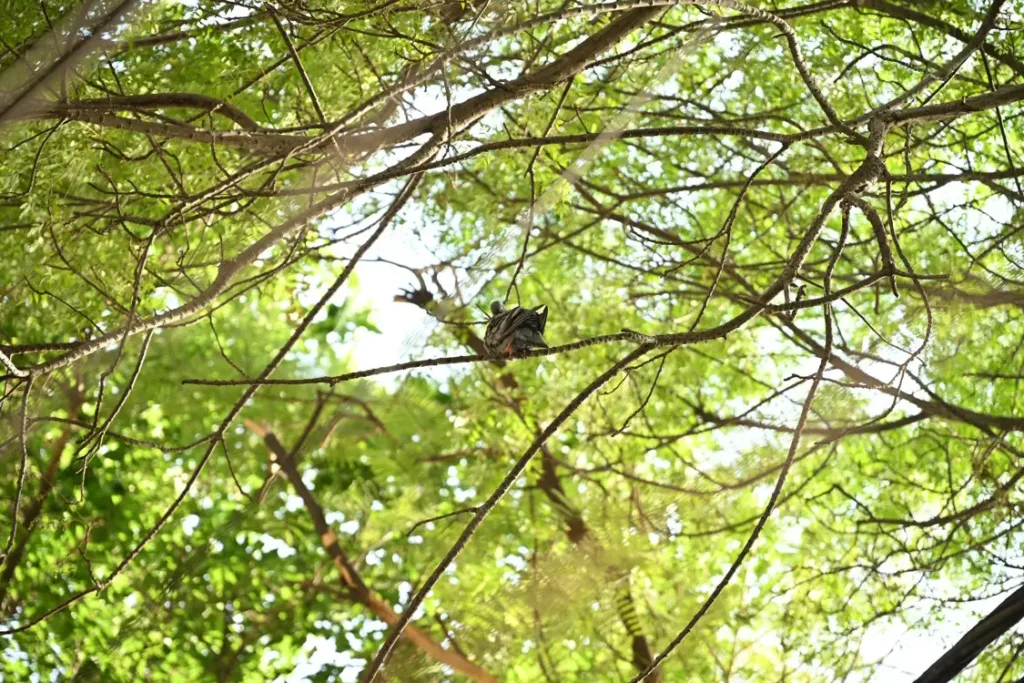
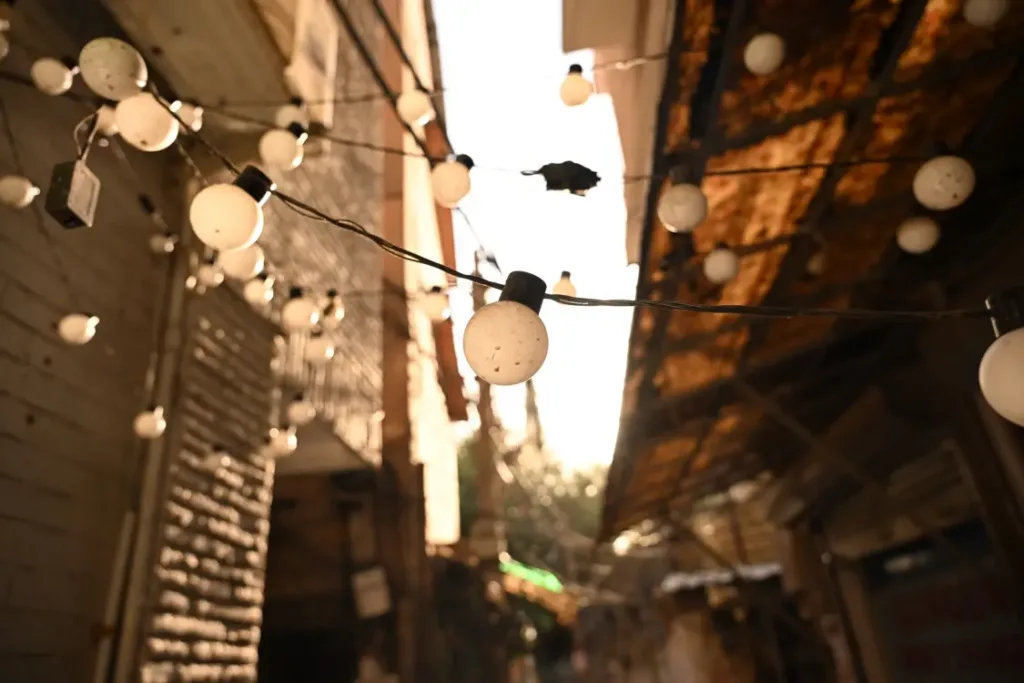

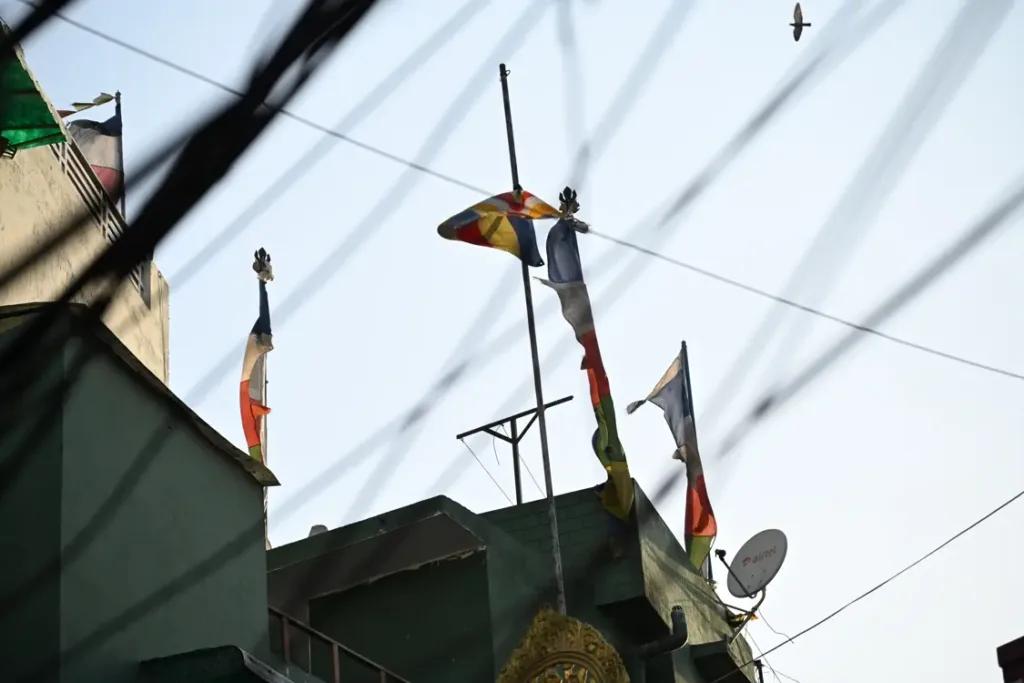


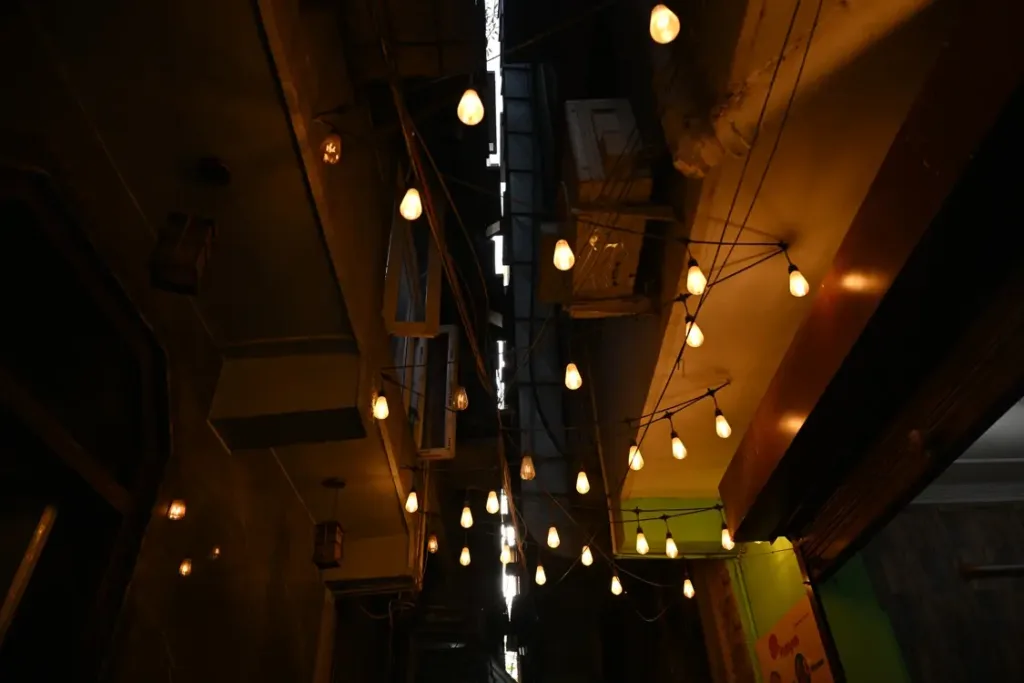

One of the aspects I truly appreciate about conventional cameras is the control they offer over shadows and highlights. With the Nikon Zf, you have superior control over the dynamic range, allowing you to decide the degree of accentuation for shadows and highlights.
The ISO range can reach an impressive 64000 (show me a smartphone that can do that), and with smart management of ISO, shutter speed, and aperture, you can capture images with minimal noise even in low-light conditions.
Furthermore, you can maintain the integrity of shadows and highlights. In my experience, I rarely needed to exceed ISO 800 and could manage the brightness levels effectively to capture a solid dynamic range in my photos.
The Nikon Zf excels at capturing vibrant colors and intricate details. Its white balance control is effective, allowing you to easily adjust from a natural cloudy look to a more cyberpunk-inspired aesthetic.
You can view the EXIF data for the shots I’ve included by accessing the dedicated Google Drive links and downloading the images.
Night Time Shots
Even in nighttime settings, the Nikon Zf offers excellent control over image quality with its extensive range of settings. To capture light sources aesthetically, I maintained the ISO at 800, aperture at around F/5, and shutter speed at 1/20th of a second.

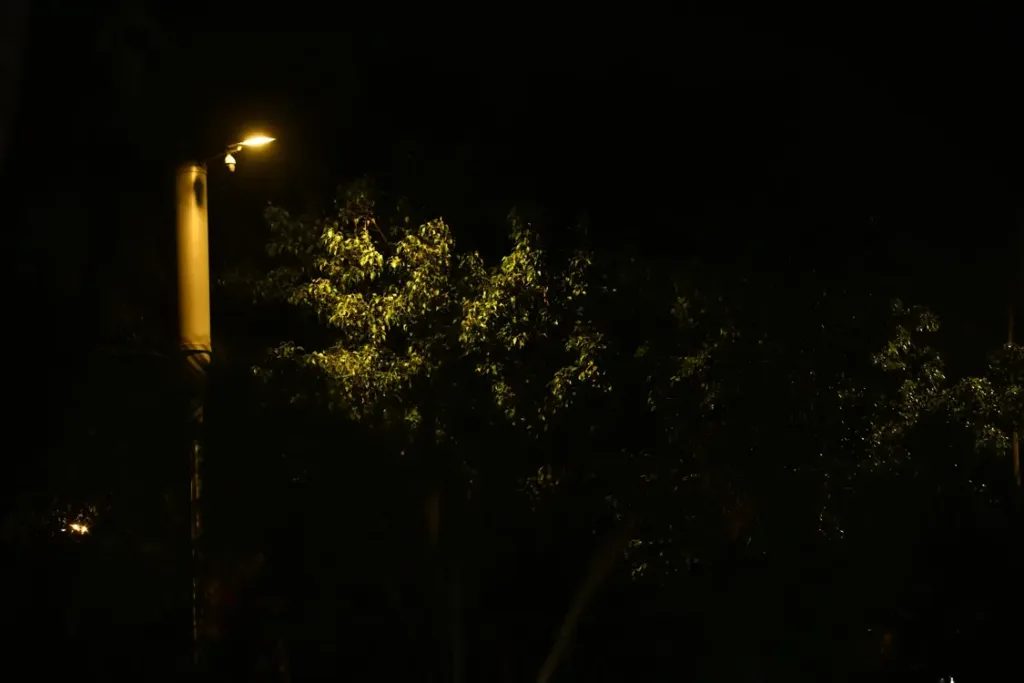




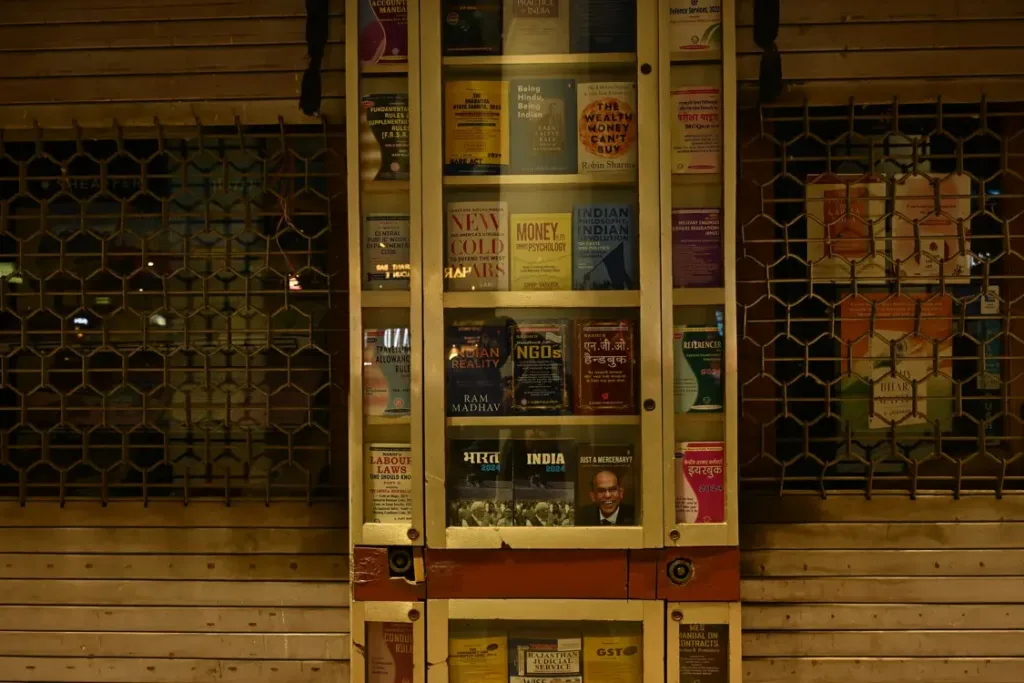
Even in these low-light shots, the camera maintains details well with minimal noise. This allows for some impressive nighttime photography. And if you’re into a bit of film-grain effect, you can easily add a touch of noise to your liking.
B&W Shots
My absolute favorite feature of the Nikon Zf is its dedicated black and white mode. I could spend a week shooting exclusively in black and white with this camera. The deep blacks and rich whites it produces are incredibly addictive. The dedicated black and white toggle at the top right of the camera made it so easy to switch and instantly capture the world around me in a vintage style.

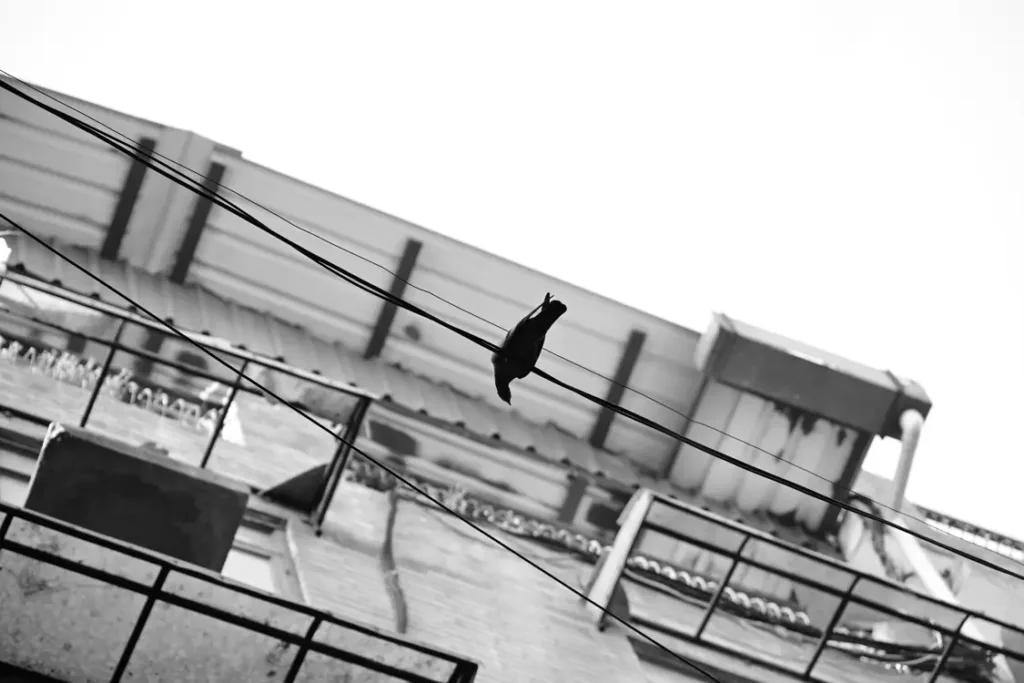



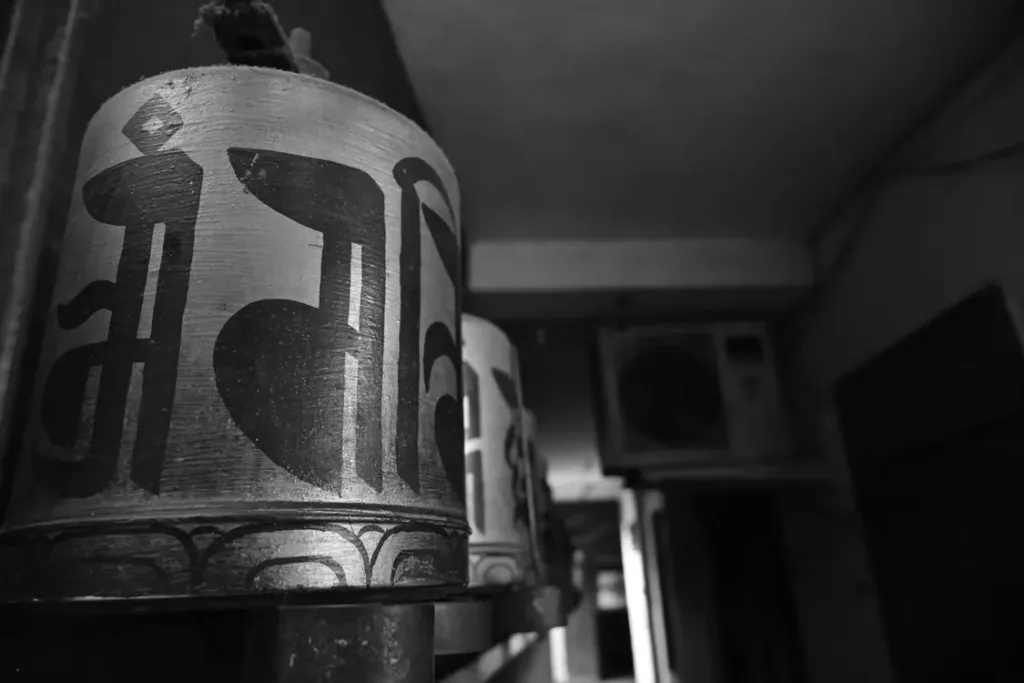
Videos
When it comes to video, the Nikon Zf can shoot up to 4K at 60FPS in MOV and MP4 formats. In MOV, you can choose between H.265 8-bit or 10-bit formats, with the camera indicating that the latter is suitable for editing on a high-performance computer. For MP4, there’s an 8-bit H.264 format. The video quality is impressive, and there are no issues with focus hunting.
The autofocus performs admirably, offering creative possibilities. However, if you’re accustomed to the stable, OIS-backed videos from your smartphone for vlogging, the Zf’s output might feel somewhat unstable. Nevertheless, it provides one of the most stable outputs among cameras. Once mounted on a gimbal or tripod, you can capture excellent videos.
You may encounter some flicker, but adjusting the Shutter Speed, ISO, and aperture can easily eliminate it. The camera also offers video flicker reduction and an Auto ISO control mode to help manage flicker.
Battery Life
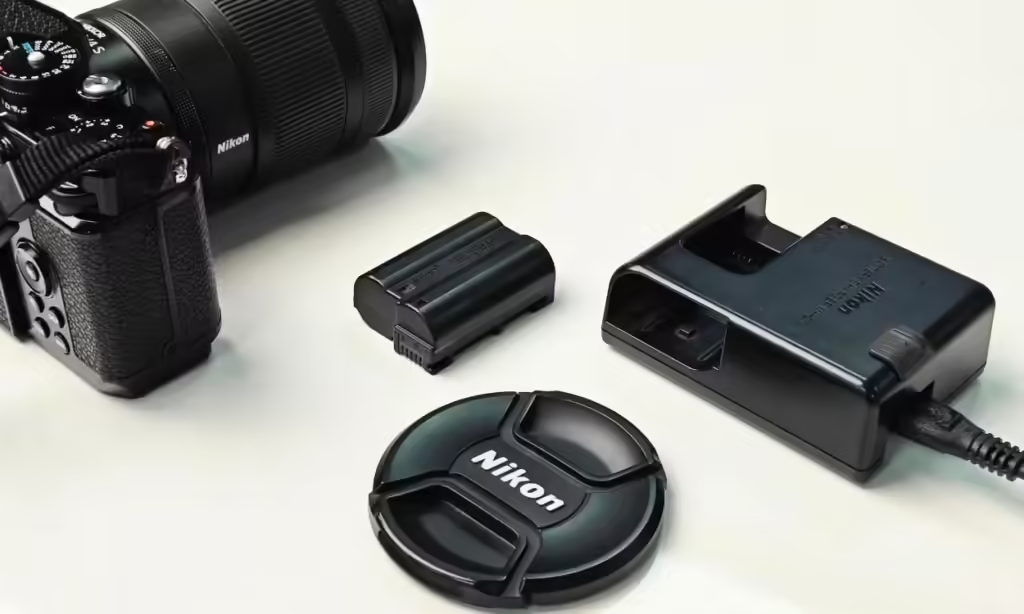
I planned a full day of photo walking with my friends and managed to capture around 250 shots before the battery indicator turned red. Surprisingly, the next day, I could still take around 50 shots before the battery level became critically low and locked me out. Most of these shots were taken using the digital viewfinder.
While the battery life is not the best, it’s sufficient for casual users like me. However, if you’re a professional photographer, it would be wise to have spare batteries on hand.
Near-Perfect Blend of Style and Substance

Over time, my enthusiasm for traditional camera photography has waned. Despite my attempts to rekindle the passion, the convenience of mobile photography has overshadowed the appeal of using a conventional camera. Moreover, the cameras I’ve used lately have failed to ignite any excitement within me.
The Nikon Zf has reignited my passion for photography. Once a shutterbug with a fading curiosity, I now find myself eager to go on photo walks and engage in serious photography once again. The tactile experience of adjusting ISO, shutter speed, and aperture using physical dials, as well as the satisfaction of pressing the physical shutter button, has rekindled my enthusiasm. I’m so captivated by this $1,999.99 beauty that I’m tempted to rush to the store and make it mine.
The standout feature of the Nikon Zf is its deceptive 80s aesthetic coupled with robust modern hardware. While smartphone sensors have become incredibly capable, once you hold the Nikon Zf in your hands, there’s no turning back.
Another commendable aspect of the camera is its user-friendly design despite offering a plethora of options. The clean, clutter-free UI ensures that anyone can quickly get the hang of it.
However, I would still label it as near-perfect due to two key reasons. Firstly, the physical buttons are not as user-friendly as they could be. Secondly, while the design exudes class, the lack of a grip makes the Zf alarmingly prone to accidental drops.
All things considered, while I may not be equipped with enough camera knowledge to declare this the best mirrorless camera available, I can confidently say that it’s thanks to such incredible technology that cameras will never become obsolete.
Pros
- Aesthetic vintage design
- Incredible build quality
- Vari-angle digital viewfinder
- AI-powered automatic subject detection
- 96MP high-resolution shot capability
- Robust manual focusing and multiple AF options
- Effective in-body image stabilization (IBIS)
Cons
- Tedious dial placement
- Lack of a handgrip for support
- Poor weight balance when a lens is attached
The Nikon Zf is currently the brand’s most vintage-looking modern mirrorless camera. Despite its 80s aesthetic, it boasts impressive features such as AI subject detection and 96MP high-resolution capture, hitting the mark perfectly. Monochrome enthusiasts will appreciate the dedicated black-and-white mode toggle. While it has some design shortcomings, this camera justifies its $1,999.99 price tag and stands out as one of Nikon’s best premium mid-range mirrorless cameras available today.
AzMo Tech Score





